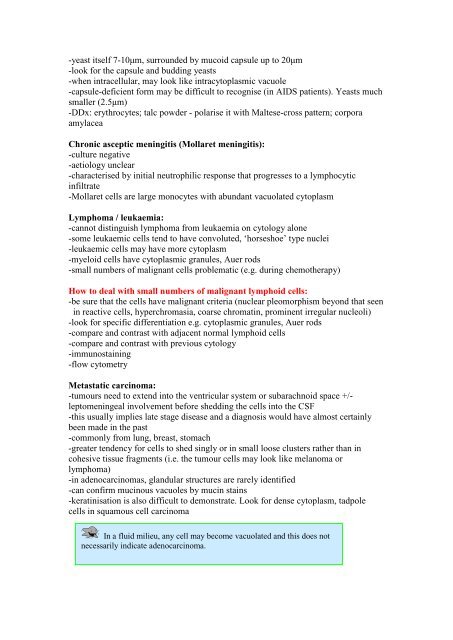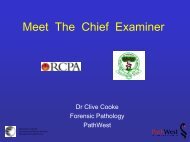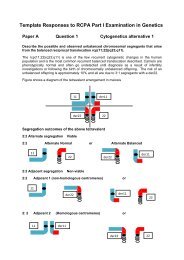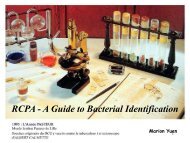CSF/brain smear cytology - Rcpa.tv
CSF/brain smear cytology - Rcpa.tv
CSF/brain smear cytology - Rcpa.tv
- No tags were found...
Create successful ePaper yourself
Turn your PDF publications into a flip-book with our unique Google optimized e-Paper software.
-yeast itself 7-10μm, surrounded by mucoid capsule up to 20μm-look for the capsule and budding yeasts-when intracellular, may look like intracytoplasmic vacuole-capsule-deficient form may be difficult to recognise (in AIDS patients). Yeasts muchsmaller (2.5μm)-DDx: erythrocytes; talc powder - polarise it with Maltese-cross pattern; corporaamylaceaChronic asceptic meningitis (Mollaret meningitis):-culture negative-aetiology unclear-characterised by initial neutrophilic response that progresses to a lymphocyticinfiltrate-Mollaret cells are large monocytes with abundant vacuolated cytoplasmLymphoma / leukaemia:-cannot distinguish lymphoma from leukaemia on <strong>cytology</strong> alone-some leukaemic cells tend to have convoluted, ‘horseshoe’ type nuclei-leukaemic cells may have more cytoplasm-myeloid cells have cytoplasmic granules, Auer rods-small numbers of malignant cells problematic (e.g. during chemotherapy)How to deal with small numbers of malignant lymphoid cells:-be sure that the cells have malignant criteria (nuclear pleomorphism beyond that seenin reactive cells, hyperchromasia, coarse chromatin, prominent irregular nucleoli)-look for specific differentiation e.g. cytoplasmic granules, Auer rods-compare and contrast with adjacent normal lymphoid cells-compare and contrast with previous <strong>cytology</strong>-immunostaining-flow cytometryMetastatic carcinoma:-tumours need to extend into the ventricular system or subarachnoid space +/-leptomeningeal involvement before shedding the cells into the <strong>CSF</strong>-this usually implies late stage disease and a diagnosis would have almost certainlybeen made in the past-commonly from lung, breast, stomach-greater tendency for cells to shed singly or in small loose clusters rather than incohesive tissue fragments (i.e. the tumour cells may look like melanoma orlymphoma)-in adenocarcinomas, glandular structures are rarely identified-can confirm mucinous vacuoles by mucin stains-keratinisation is also difficult to demonstrate. Look for dense cytoplasm, tadpolecells in squamous cell carcinomaIn a fluid milieu, any cell may become vacuolated and this does notnecessarily indicate adenocarcinoma.
















